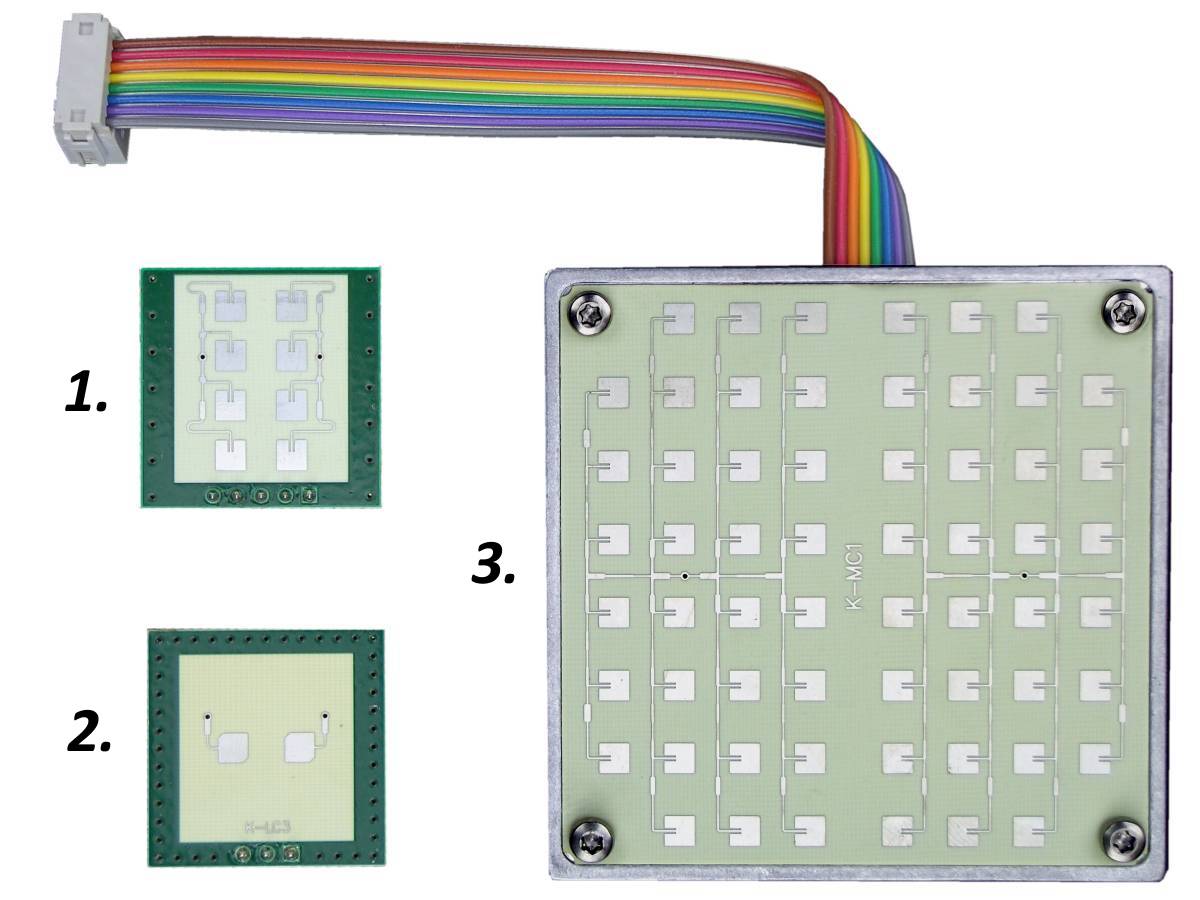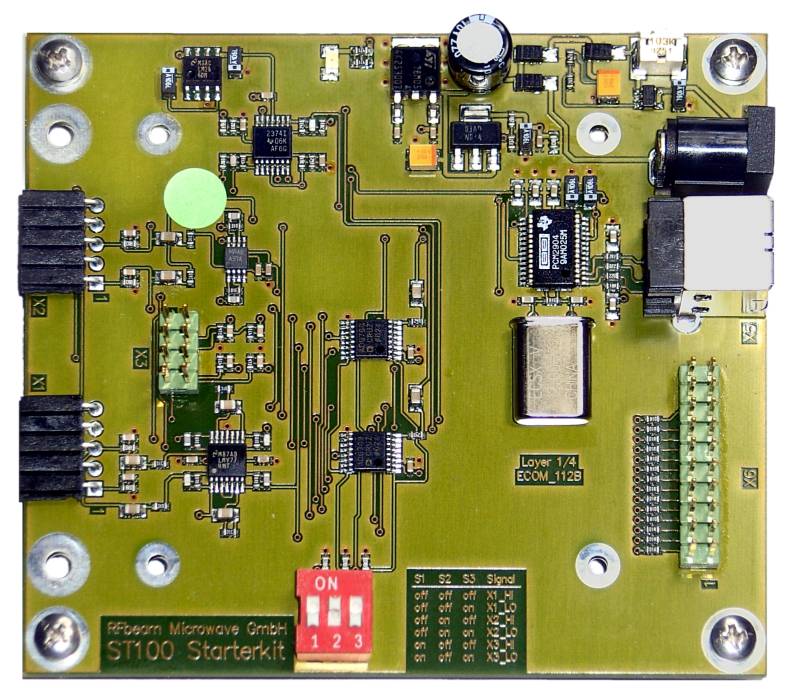ST100 Starter Kit
Description of the radar set, tactical-technical characteristics

Figure 1: Different possible Transceivers: 1. K–LC1a, 2. K–LC3 und 3. K–MC1
| Specifications | |
|---|---|
| frequency: | 24 … 24.5 GHz
(K-Band) |
| average power: | 4 mW |
| instrumented range: | 10 m … >200 m |
| range resolution: | |
| accuracy: | |
| beamwidth: | |
| MTBCF: | |
| MTTR: | |
ST100 Starter Kit
The ST100 Starter Kit is a laboratory system for a complete continuous wave radar (CW) and consists of the motherboard having a USB 1 interface to a computer, a simple K-Band transceiver (K-LA1) in the form of an active antenna and the software for evaluation the received signals. Provider of this tool is RFbeam Microwave Ltd., headquartered in Switzerland. The ST100 Starter Kit is ideal for the development of experience in the field of Doppler radar and can optionally be modified in its application by additionally offered transceivers.
Since the expected Doppler frequencies are in the range up to 16 kHz (corresponding to a radial speed of 360 km/h), the core of the main board consists of a stereo processor, which was developed for acoustic applications. This one is equipped with two built-in low-noise analog to digital converters, which transmit a digital output signal with a resolution of 16 bit over the USB-1 interface to the computer. The two independent channels allow an analysis of amplitude and phase angle by using a transceiver with synchronous detector and I&Q– output pins.
The software represents these signals on the screen of the computer in two charts: Time-Domain and Frequency-domain. The received signals may be stored in the computer memory, and can be played back on the main board to represent measurement results at a later time again. This feature makes this Starter Kit very interesting for teaching, because the results obtained in field experiments can be examined separately in the classroom at a later time.
The ST100 with its created in LabView software can provide signals for your own applications, for example in safety technology. In the simplest case, this may be room monitoring with Doppler radar, which indicate any movement in this room. Since the electromagnetic waves of the radar penetrate even thin walls, this technique can be installed very inconspicuously. When using two starter kits, each fitted with a transceiver with strong narrow beam patch antenna, then you can create a full-fledged barrier radar. Both devices then work with a slightly frequency offset. Both devices then have a constant output signal without disturbance. But every intruder changes the received signals by causing a strong fluctuation of in the first Fresnel zone, and thus triggers an alarm.
The patch antennas of the transceiver generally consist of a transmitting antenna in addition to a separate receiving antenna. On some models, the receiving antenna may be additionally divided into two halves in order to have a phase evaluation between the two receive channels, and thus to be able to make a software based direction determination.

Figure 2: PCB motherboard of ST100 Starter Kit


